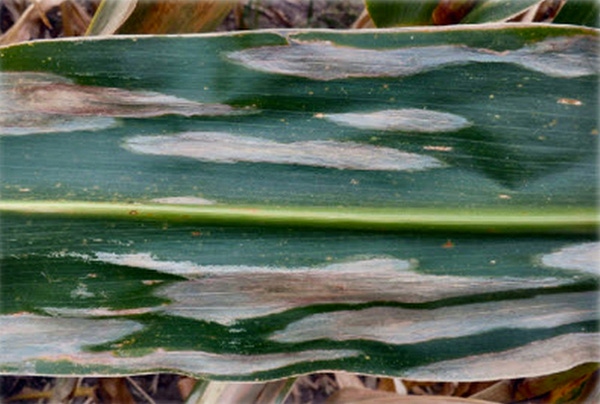June 19, 2013

Northern leaf blight (NLB) is found in humid climates. It can make its way up through the Corn Belt riding hurricane winds, which can quickly carry the organism from south to north. Caused by the fungus Exserohilum turcicum, NLB can overwinter in diseased corn leaves, husks and other plant debris. Wet conditions in corn-growing areas this year provide favorable conditions for spore production on crop residue.
Spores from NLB are spread by rain splash and air current, landing onto the leaves of new crop plants and infecting the plant. Spores can spread infection from plant to plant and field to field when carried over long distances. Humidity then promotes lesion development and multiplication until the leaf is destroyed. Leaf loss affects ear fill significantly as the leaf is responsible for up-taking carbohydrates for grain development. Infection typically occurs when free water is present on the leaf surface for 6 to 18 hours and temperatures are between 65 and 80 degrees.
Infections begin on lower leaves and progress up the plant, however, in severe NLB breakouts infections may begin in the upper plant canopy. Heavy dews, frequent light showers, high humidity and moderate temperatures favor the spread of NLB. The development of lesions on the ear leaf or above can result in significant yield loss.
Steps to prevent and minimize NLB impact:
Select resistant hybrids
Reduce residue by crop rotation
Tillage
Apply foliar fungicide
For more information visit pioneer.com.
Like what you're reading? Subscribe to Farm Industry News Now e-newsletter to get the latest news and more straight to your inbox twice weekly.
You May Also Like




